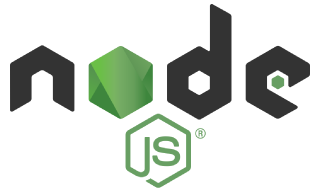Node.js: A Comprehensive Overview
Node.js is a powerful and versatile JavaScript runtime environment that has revolutionized web development. Here’s a breakdown covering its key aspects, benefits, use cases, and more:
1. What is Node.js?
- JavaScript Runtime: Traditionally, JavaScript ran in web browsers. Node.js allows you to run JavaScript outside of a browser, directly on your computer’s operating system (Windows, macOS, Linux).
- Built on Chrome’s V8 Engine: Node.js uses Google Chrome’s V8 JavaScript engine, known for its speed and efficiency. This means Node.js code is executed very quickly.
- Event-Driven, Non-Blocking I/O Model: This is a core concept. Instead of waiting for a task to complete before moving on (blocking), Node.js handles multiple tasks concurrently using an event loop. This makes it highly efficient for handling many simultaneous connections.
- Open Source & Cross-Platform: Node.js is free to use and distribute, and it works on various operating systems.
2. Key Features & Concepts
- npm (Node Package Manager): The world’s largest ecosystem of open-source libraries and packages. npm makes it incredibly easy to install, manage, and share reusable code. Think of it like an app store for JavaScript code.
- Modules: Node.js uses a modular system. Code is organized into reusable modules, promoting code organization and maintainability. You can create your own modules or use those from npm.
- Asynchronous Programming: Node.js heavily relies on asynchronous programming. This means operations that might take time (like reading a file or making a network request) are handled in a way that doesn’t block the main thread of execution. Callbacks, Promises, and
async/awaitare common techniques for handling asynchronous operations. - Event Loop: The heart of Node.js’s non-blocking I/O model. It continuously monitors for events (like a completed network request) and executes the corresponding callback functions.
- Single-Threaded: Despite handling concurrency, Node.js is fundamentally single-threaded. However, the event loop and non-blocking I/O allow it to handle many concurrent operations efficiently without creating multiple threads. (Worker Threads are available for CPU-intensive tasks, but they are not the default).
3. Benefits of Using Node.js
- Performance: V8 engine and non-blocking I/O make Node.js very fast, especially for I/O-bound applications.
- Scalability: The event-driven architecture allows Node.js applications to handle a large number of concurrent connections with minimal overhead.
- Full-Stack JavaScript: You can use JavaScript for both the front-end (browser) and back-end (server), simplifying development and allowing for code reuse.
- Large and Active Community: A huge community means plenty of resources, libraries, and support available.
- npm Ecosystem: Access to a vast collection of pre-built packages saves development time and effort.
- Real-time Applications: Excellent for building real-time applications like chat apps, online games, and collaborative tools.
- Microservices Architecture: Node.js is well-suited for building small, independent microservices.
4. Use Cases
- Real-time Applications: Chat applications, streaming services, online games.
- API Servers (RESTful APIs): Building back-end APIs for web and mobile applications. Express.js is a popular framework for this.
- Single-Page Applications (SPAs): Serving the front-end code and handling API requests for SPAs built with frameworks like React, Angular, or Vue.js.
- Command-Line Tools: Creating utilities and scripts for automating tasks.
- Data Streaming Applications: Processing large amounts of data in real-time.
- IoT (Internet of Things): Building applications to interact with and manage IoT devices.
- Microservices: Developing independent, scalable services.
- Serverless Functions: Deploying Node.js code as serverless functions on platforms like AWS Lambda or Google Cloud Functions.
5. Popular Frameworks & Libraries
- Express.js: A minimalist and flexible web application framework. The most popular choice for building web APIs and applications.
- NestJS: A progressive Node.js framework for building efficient, reliable and scalable server-side applications. Inspired by Angular.
- Koa.js: Designed by the team behind Express, aiming to be a smaller, more expressive, and more robust foundation for web applications and APIs.
- Socket.IO: Enables real-time, bidirectional communication between web clients and servers.
- Mongoose: An Object Data Modeling (ODM) library for MongoDB.
- Sequelize: An ORM (Object-Relational Mapper) for relational databases like PostgreSQL, MySQL, and SQLite.
- Passport.js: Authentication middleware for Node.js.
- Hapi.js: A rich framework for building applications and services.
6. Getting Started
- Install Node.js: Download the installer from https://nodejs.org/
- Verify Installation: Open your terminal/command prompt and run
node -vandnpm -v. You should see the version numbers. - Create a Simple Script: Create a file named
hello.jswith the following content:console.log("Hello, Node.js!"); - Run the Script: In your terminal, navigate to the directory where you saved
hello.jsand runnode hello.js. You should see “Hello, Node.js!” printed to the console. - Explore npm: Try installing a package:
npm install lodashThen, use it in a script.
7. Resources for Learning
- Official Node.js Documentation: https://nodejs.org/en/docs/
- MDN Web Docs (JavaScript): https://developer.mozilla.org/en-US/docs/Web/JavaScript (Good for JavaScript fundamentals)
- NodeSchool: https://nodeschool.io/ (Interactive tutorials)
- FreeCodeCamp: https://www.freecodecamp.org/ (Comprehensive web development curriculum)
- Udemy, Coursera, edX: Online courses on Node.js and related technologies.
In conclusion
Node.js is a powerful and versatile technology that has become a cornerstone of modern web development. Its speed, scalability, and the vast npm ecosystem make it an excellent choice for a wide range of applications. If you’re a JavaScript developer, learning Node.js is a valuable investment that will open up new opportunities and allow you to build full-stack applications with a single language.
